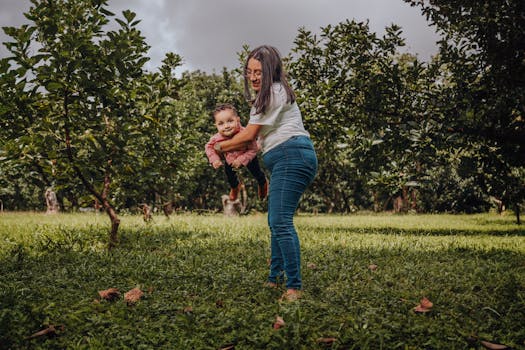Flying with a Baby - Traveling with Kids Follow-Up
Planning a family getaway or making a trip to see loved ones with a young child demands thoughtful organization, a calm demeanor, and the ability to adapt to changing circumstances. As an increasing number of families embark on air travel, grasping the nuances of flying with young children can significantly enhance the experience, making it more seamless and enjoyable for everyone involved. From packing essentials to dealing with mid-flight meltdowns, there are countless details to consider when traveling with babies or young children.
Preparing for Air Travel with a Baby
Begin by exploring the specific regulations that airlines implement regarding travel with infants, since these guidelines can vary greatly among different companies. Some airlines allow babies under two years of age to fly on their parent’s lap for free or at a reduced fare. Investing in a separate seat and using an FAA-approved car seat can enhance safety and comfort.
Packing wisely is another critical aspect. Essentials such as diapers, wipes, formula or snacks, and changes of clothes should be easily accessible in your carry-on bag. Consider the duration of the flight and plan accordingly. Items like noise-canceling headphones for babies or small toys can help keep them comfortable and entertained during
Timing your flight is also essential. Many parents find that scheduling flights around nap times or bedtime increases the chances of their child sleeping during Direct flights are usually preferable to avoid the hassle of layovers and additional stress.
Lastly, don’t forget about documentation requirements. Most airlines require proof of age for infants, such as a birth certificate or passport, especially for international travel. Double-check these requirements well ahead of your departure date.
Understanding the Processes at Airports
Airports can feel Familiarizing yourself with airport procedures in advance can save time and reduce stress. Many airports offer family lanes at security checkpoints designed to streamline the process for those traveling with young children.
When passing through security, be prepared to remove your child from their stroller or carrier for screening. Liquids exceeding the usual 3-1-1 rule (such as breast milk or formula) are generally allowed but must be declared at security checkpoints. The Transportation Security Administration (TSA) provides detailed guidelines on traveling with children that are worth reviewing before you arrive at the airport.
If you’re traveling internationally, consider investing in Global Entry or TSA PreCheck if available in your country. These programs can expedite your security screening process and make traveling with kids more manageable.
A final tip is to arrive early to give yourself extra time for unexpected delays like diaper changes or feeding breaks before boarding the plane. Many airports also have family-friendly facilities such as nursing rooms or play areas that can be incredibly helpful while waiting for your flight.

Managing In-Flight Challenges
The actual flight often presents its own set of challenges when flying with a baby. Cabin pressure changes during takeoff and landing can cause discomfort for young children due to their sensitive ears. Offering your baby a pacifier, breastfeeding, or giving them a bottle during these moments can help soothe ear discomfort that arises from fluctuations in pressure.
Keeping your baby entertained during the flight is equally important. Pack an assortment of lightweight toys or books that are easy to grab from your bag mid-flight. Rotating toys every so often helps maintain their interest. If screen time is an option in your parenting style, downloading a few kid-friendly videos onto a tablet beforehand may also be beneficial.
If your baby becomes fussy or cries during the flight, stay calm and remember that most passengers understand how challenging it can be to travel with children. Simple actions like walking up and down the aisle (if permitted) or rocking them gently may help soothe them.
Airlines generally provide some accommodations for families traveling with infants, such as bassinets on long-haul flights. It’s best to request these services when booking tickets as availability is limited.
Coping with Post-Flight Adjustments
Long-haul flights or drastic time zone changes can disrupt sleep patterns and routines, making it essential to re-establish consistency as quickly as possible upon arrival.
A practical approach to alleviate jet lag for your baby is to slowly shift their routine to match the time zone of your travel destination in the days before you depart. Shifting your bedtime by just 15 minutes each day can aid in creating a more seamless transition to a new sleep routine.
After landing, prioritize hydration and nourishment for both you and your child, air travel tends to dehydrate passengers quickly due to cabin conditions. Ensure you have snacks readily available if mealtimes have been delayed due to travel disruptions.
If you’ve checked luggage containing baby gear such as strollers or car seats, confirm their condition upon retrieval at baggage claim areas since damage occasionally occurs during transit. Reporting any issues immediately ensures faster resolution.
| Item | Tips |
|---|---|
| Packing Essentials | Diapers, wipes, formula/snacks, clothing changes |
| Entertainment | Toys, books, kid-friendly videos |
| Comfort Items | Travelers should be prepared to bring their own pillows or blankets if the airline does not supply them. |
| Documentation | Birth certificate/passport (as required) |
| Airport Facilities | Nursing rooms/play areas (if available) |
Every trip presents new learning opportunities that make future journeys easier. While challenges are inevitable when traveling with young children, focusing on preparation and flexibility allows families to create lasting memories together. The art of successful family travel lies in finding balance, balancing your child’s needs with practical considerations while staying adaptable amidst unforeseen circumstances.
If you’re preparing for a trip with young children, pause to consider what is truly important: crafting memorable experiences that transform each moment spent in bustling airports and aboard flights into something special.